
What is CSS3? Some examples like transitions, transforms and animations highlights the new features of CSS3.
- Subject:
- Applied Science
- Computer Science
- Material Type:
- Student Guide
- Date Added:
- 01/18/2019

What is CSS3? Some examples like transitions, transforms and animations highlights the new features of CSS3.

This resource reviews the concept of using transitions and basic organizational principles to add cohesion to writing. See also "Cohesion Part II" and Cohesion Part III."

The 11th grade learning experience consists of 7 mostly month-long units aligned to the Common Core State Standards, with available course material for teachers and students easily accessible online. Over the course of the year there is a steady progression in text complexity levels, sophistication of writing tasks, speaking and listening activities, and increased opportunities for independent and collaborative work. Rubrics and student models accompany many writing assignments.Throughout the 11th grade year, in addition to the Common Read texts that the whole class reads together, students each select an Independent Reading book and engage with peers in group Book Talks. Students move from learning the class rituals and routines and genre features of argument writing in Unit 11.1 to learning about narrative and informational genres in Unit 11.2: The American Short Story. Teacher resources provide additional materials to support each unit.

In this unit, students will produce two major pieces of work. The first piece is an argument essay that grapples with one of the core questions of the unit: who are we, and who have we become because of the ways we connect? Students will read, annotate, and discuss several texts together as they consider the issues surrounding this question, and they will also research and annotate independently as they search for more evidence and perspectives to help deepen their ideas. They will also create a museum exhibit as part of a team. The exhibit project will help students identify what's worth preserving about their unique place in history.
PROJECT UNITS
This project unit continues to meet the English Language Arts standards as it also utilizes the learning principles established by the Partnership for 21st Century Skills. It is designed to support deep content knowledge and perseverance through long-term project planning and implementation. In addition, it will help students to recognize, develop, and apply the planning, teamwork, communication, and presentation skills they will use while presenting a final product to their class and/or the greater community. This real-world project-based activity will give students an opportunity to apply the skills they have been learning all year and will guide them to develop the motivation, knowledge, and skills they need in order to be college and career ready.
ACCOMPLISHMENTS
Students write an argument paper where they develop a claim about current culture as it has been influenced by digital connectivity.
Students participate in a group project to create a museum exhibit that captures a unique place, time, and relationship to technology. Students acknowledge the differing perspectives of each group member and use those perspectives to synthesize one cohesive visual argument together.
GUIDING QUESTIONS
These questions are a guide to stimulate thinking, discussion, and writing on the themes and ideas in the unit. For complete and thoughtful answers and for meaningful discussions, students must use evidence based on careful reading of the texts.
What does it mean to be digitally connected?
What are the implications of living in a world where everyone is digitally connected?
How does the availability of instant connectivity shape our relationships?
What does our Internet use reveal about people's needs as humans?
BENCHMARK ASSESSMENT: Cold Read
During this unit, on a day of your choosing, we recommend you administer a Cold Read to assess students’ reading comprehension. For this assessment, students read a text they have never seen before and then respond to multiple-choice and constructed-response questions. The assessment is not included in this course materials.
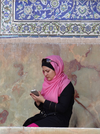
In this lesson, you will read and explore an allegory of modern life on the Internet. You will have a chance to create your own allegory to develop your thoughts about how constant digital connections have shaped our world.In this lesson, students will read and explore an allegory of modern life on the Internet. They will have a chance to create their own allegory to develop their thoughts about how constant digital connections have shaped our world.
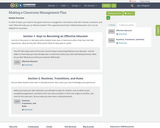
In order to teach, you need to have good classroom management. How will you deal with routines, transitions, and rules? What will make you an effective teacher? This is geared toward Early Childhood Education, but it can be adapted for secondary.
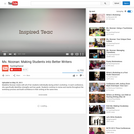
Madeline Noonan meets with all of her students individually during writer's workshop. In each conference, she specifically identifies strengths and two goals. Students continue to revise and rewrite throughout the workshop process and build confidence in their writing at the same time.
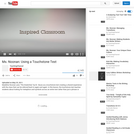
Madeline Noonan uses "The Sneetches" by Dr. Seuss as a touchstone text creating a shared experience with the class that can be referred back to again and again. In this lesson, the touchstone text teaches students about looking for metaphors and symbols across an entire text rather than just a phrase or sentence.
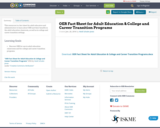
This resources is a fact sheet for adult educators and administrators to learn about OER and their benefits in the adult education classroom, as well as in college and career transition settings.
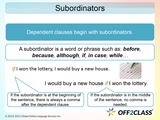
This ESL lesson plan download on subordinators, coordinators and transitions is aimed at students with intermediate proficiency levels (B1+ level). Ensure you guide your student on appropriate usage in both formal and informal contexts and in spoken and written registers.If you want additional lesson plans and support, including teachers’ notes, be sure to register for a free Off2Class account.
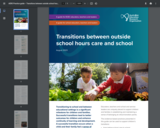
Transitioning to school and between educational settings is a significant milestone for children and families. Successful transitions lead to better outcomes for children and enhance continuity of learning and development. A successful transition occurs when a child and their family feel a sense of belonging in their new environment. Educators, teachers and school and service leaders are uniquely placed to support children and families in establishing and maintaining a sense of belonging at critical transition points. The evidence-based practices presented in this guide can be used to support children’s transitions:
from before-school care to school
from school to after-school care.
It is designed to help services and schools work together to achieve more successful transitions. We recommend school and OSHC leaders set up a meeting once each term to discuss the strategies presented in this guide and make a plan for the following term.

This evidence summary supports AERO’s practice guide for transitions between school and outside school hours care (OSHC). It describes the evidence base behind the guides, synthesising insights from available research to connect to policy and practice.
This summary is derived from a systematic review conducted with our partners at Monash University and with support from the National Outside School Hours Service Alliance (NOSHSA), in May 2022, using the Preferred Reporting Items of Systematic Review and Meta-Analyses (PRISMA) guidelines (Moher et al., 2009).
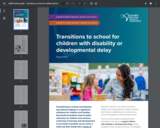
Transitioning to school and between educational settings is a significant milestone for children and families. Successful transitions lead to better outcomes for children and enhance continuity of learning and development. A successful transition occurs when a child and their family feel a sense of belonging in their new environment. Educators, teachers and school and service leaders are uniquely placed to support children and families in establishing and maintaining a sense of belonging at critical transition points. You can use the evidence-based practices presented in this guide to support children with disability or developmental delay as they transition to their first year of school. It is designed to help services and schools work together to achieve more successful transitions.
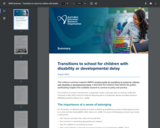
This evidence summary supports AERO’s practice guide for transitions to school for children with disability or developmental delay. It describes the evidence base behind the guides, synthesising insights from available research to connect to policy and practice. This evidence summary is derived from a systematic review conducted with our partners at Monash University in May 2022 using the Preferred Reporting Items of Systematic Review and Meta-Analyses (PRISMA) guidelines (Moher et al., 2009).
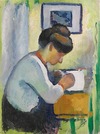
This lecture will discuss common grammar errors and stylistic weaknesses in college students' writing--including problems like run-ons, misplaced and dangling modifiers, and illogical tense shifts--and will suggest ways to revise confusing sentences and paragraphs. The lecture is offered here in three different formats: video without captions, video with captions, and a full transcript.
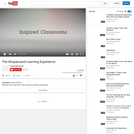
The wraparound learning experience is demonstrated by Sandi Silbernagel as she teaches her students about Cajun Tall Tales. Instructional expert Jim Knight discusses strategies and activities that can affect learning outcomes.